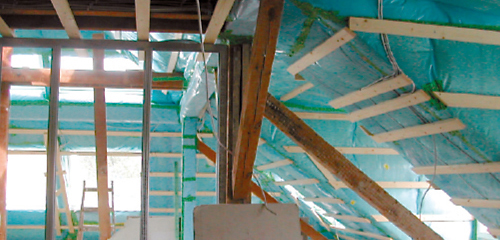- Measurement Systems for Airtightness
- Services
- BlowerDoor Testing Teams
The BlowerDoor Test

BlowerDoor Testing Teams Nearby
You are looking for a BlowerDoor measurement expert near you? Simply use the database to discover! All BlowerDoor-clients are authorised to get included free of charge. Please contact us by e-mail: info(at)blowerdoor.com
The Tale of the Breathing Building
It is a myth that buildings need to have cracks and joints to “breathe naturally.” Such air change occursin an uncontrolled manner. Too much or too little outdoor air will enter the building. Even worse, pollutants and dust from the insulation mix with the indoor air. A building should consequently be ventilated by frequently opening the windows or via a ventilation system.
The BlowerDoor test allows you to test the air tightness of buildings. It can protect against severe structural damage caused by warm and humid indoor air penetrating the building construction through joints. In addition, the indoor comfort level rises through the elimination of draughts or cold-air pools. When rehabilitating existing buildings, an air barrier planned according to the recognized standards often achieves current low-energy or even passive-house standards.
BlowerDoor 4 you: time of measurement

There are many reasons for a BlowerDoor test. Therefore, the objective of the measurement should be agreed upon in advance. We recommend the BlowerDoor measurement
1. for quality assurance during the construction phase
2. as a final measurement after completion of the construction process
3. before expiry of the warranty (airtightness is owed permanently, not only on the day of measurement)
4. in existing buildings for damage analysis or before a planned refurbishment.
A serious BlowerDoor test always includes quality assurance (leakage detection) and is an investment that pays off in any case.
What changes with the introduction of EN ISO 9972?
With the introduction of ISO 9972 there are some changes to be considered when performing BlowerDoor tests. Among other things, the requirement for the accuracy of the pressure measuring devices has been increased; this is now at least ± 1 Pa in the range 0 - 100 Pascal. We have summarized what else needs to be observed in our information sheet
